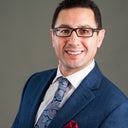"Dynamic" and "atraumatic" are marketing terms more than surgical techniques. And anyway, you shouldn't select the surgical technique that you want: better is to select a surgeon whose results you like, and then let the surgeon use whatever technique he used to get those results!You have a complicated rhinoplasty, because there are a few different changes to make, and the different changes must be blended together correctly. For example, there's the bump on the bridge. But if the bump on the bridge is removed, the nose would appear much longer, and it would look worse. So the tip needs to be elevated. And the nose needs to be brought back closer to your face. How much to remove the bump or elevate the tip? You figure that out by using morphs to create a surgical goal before the operation. I'd love for you to see some excellent professionally-designed morphs of what could possibly be done with your nose. Morphs could also help you identify what's bothering you, and help you set a goal for the rhinoplasty that's accurate for your tastes. P(Side note: in my opinion, morphs should always be done by the surgeon, or he should direct an assistant as she makes the morphs. Morphs should be made with a constant eye to what actually *can* be done in surgery, for that particular nose, and only the surgeon has that information and judgment. Another aside: I also recommend that you not show morphs made by one surgeon to a different surgeon. If a surgeon makes his *own* morphs, you get to see whether he understands the important issues of your nose, and how your nose should be changed. But if you show the surgeon someone else's morphs, and he says "Of course I can make your nose look like that," then you don't really know if he fully understands, or even recognizes, the important changes shown in those morphs. And you don't know if he can make those changes during surgery.)













